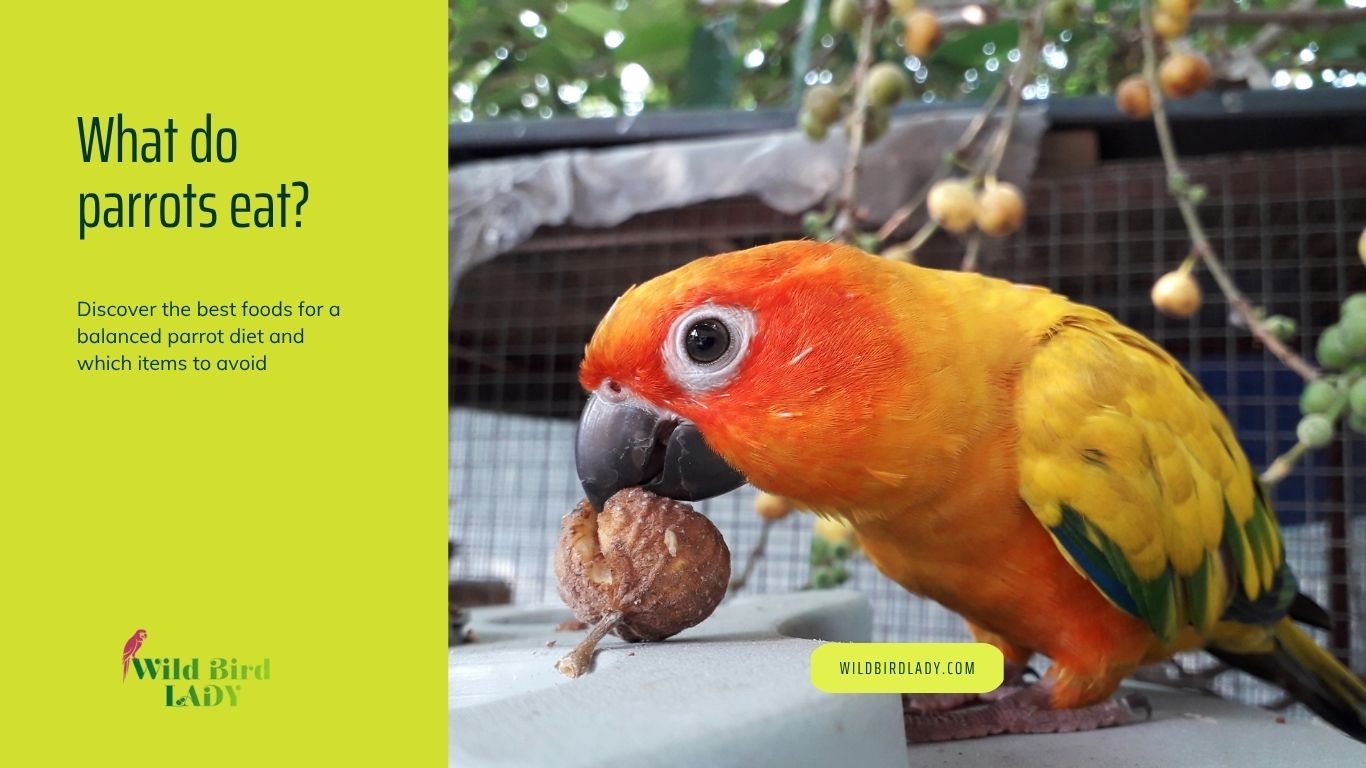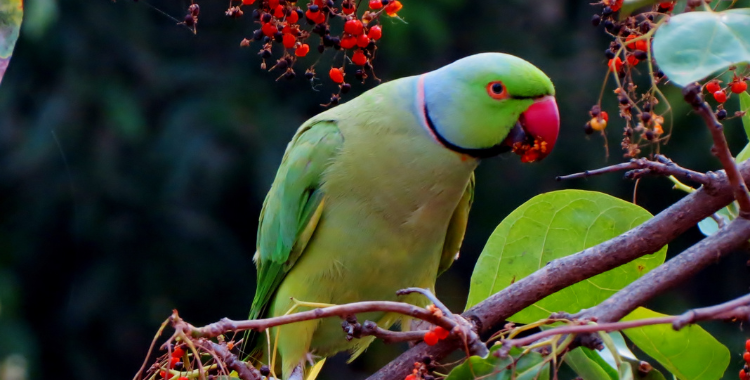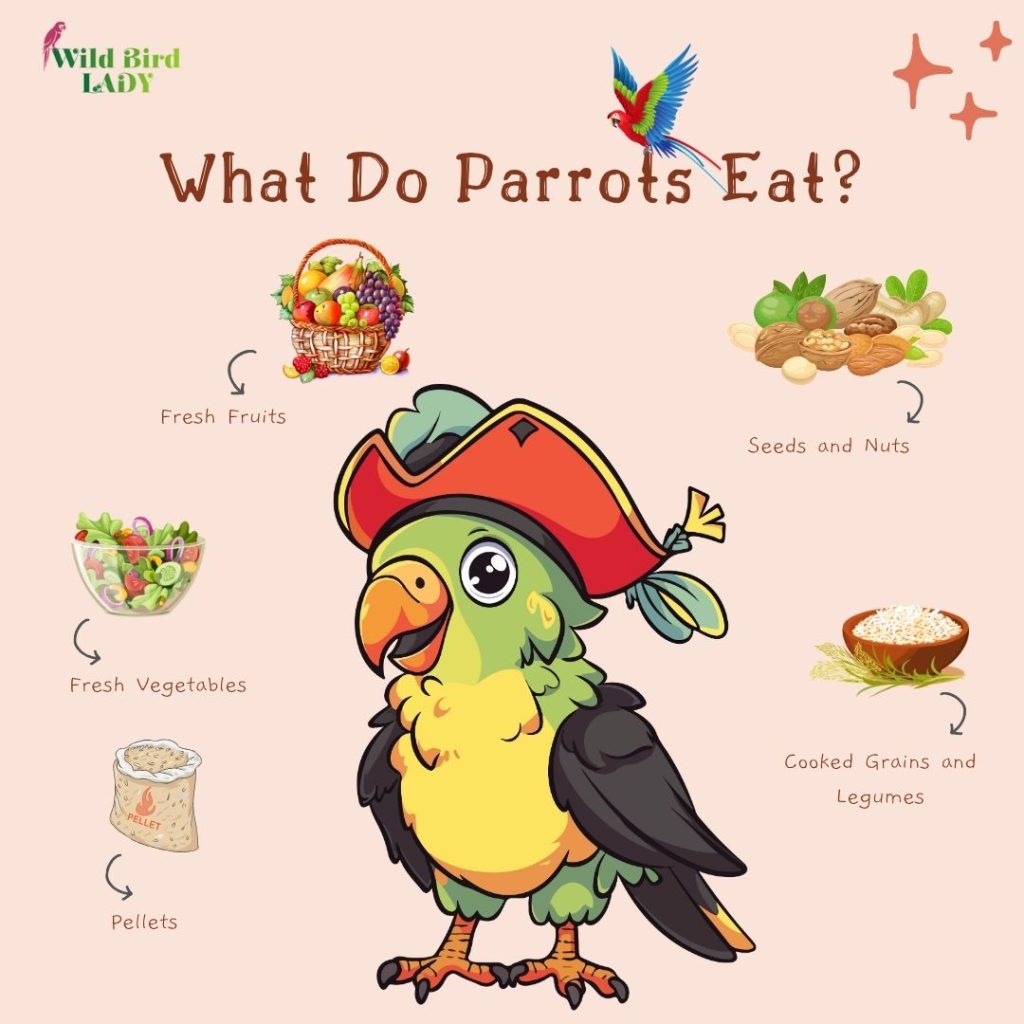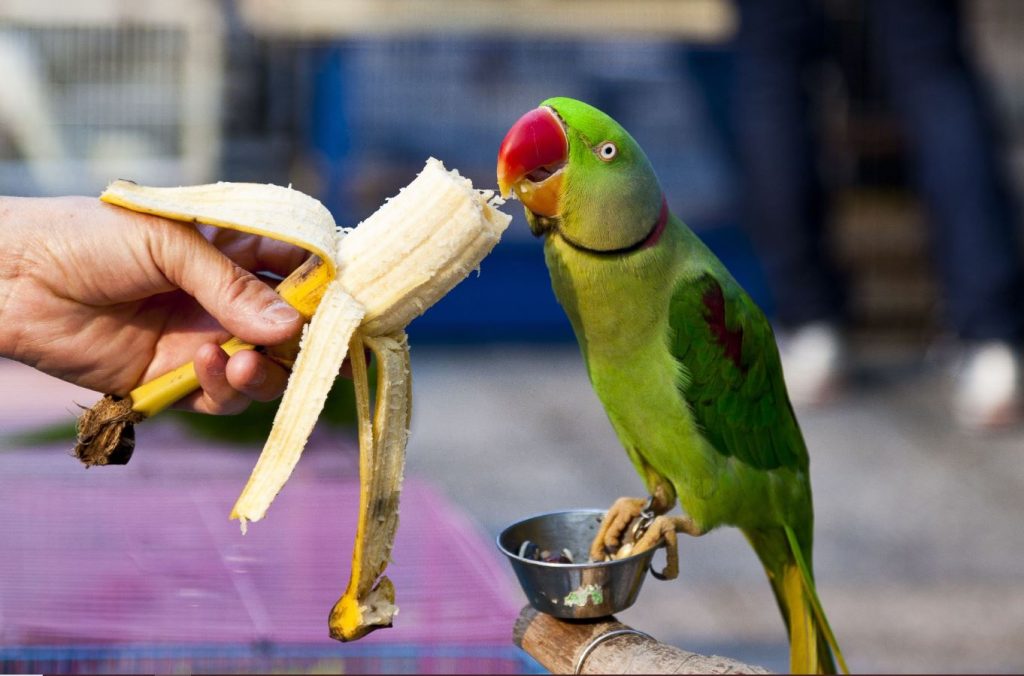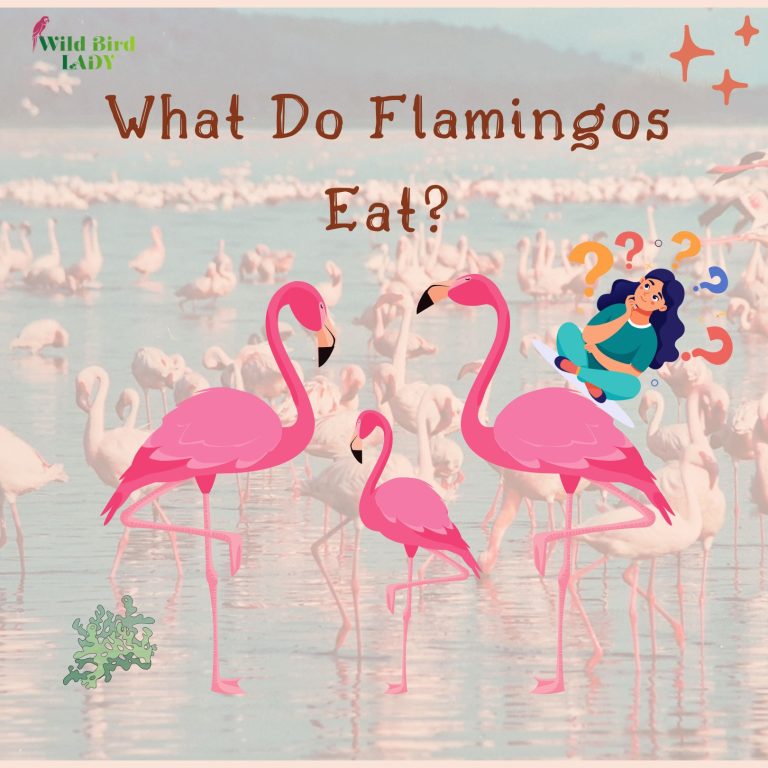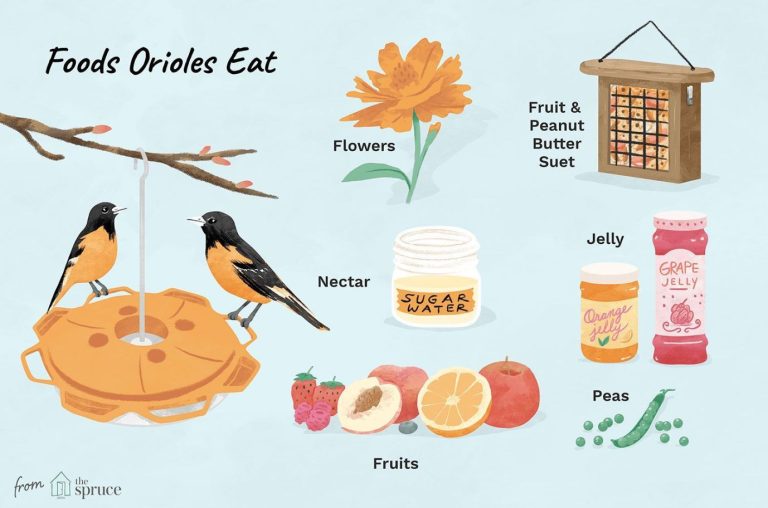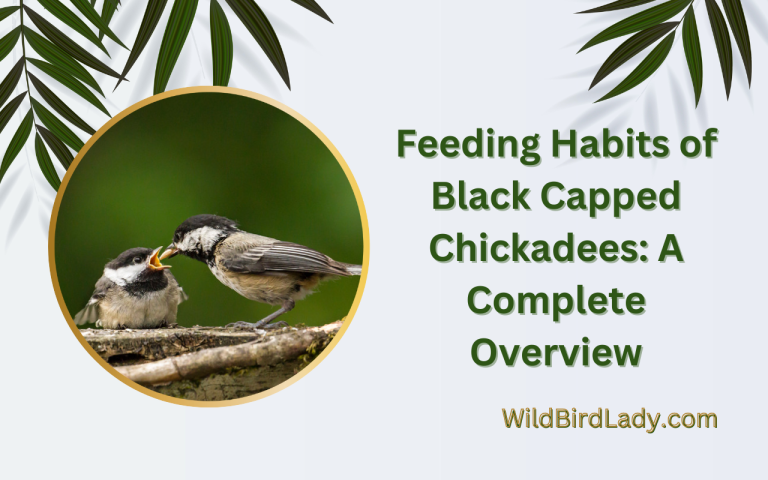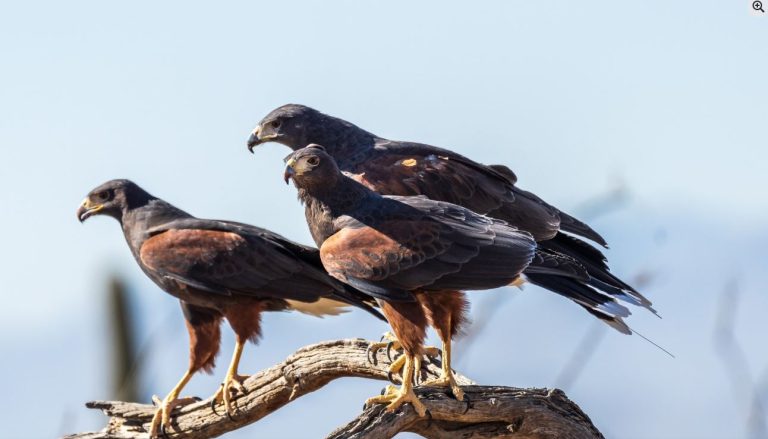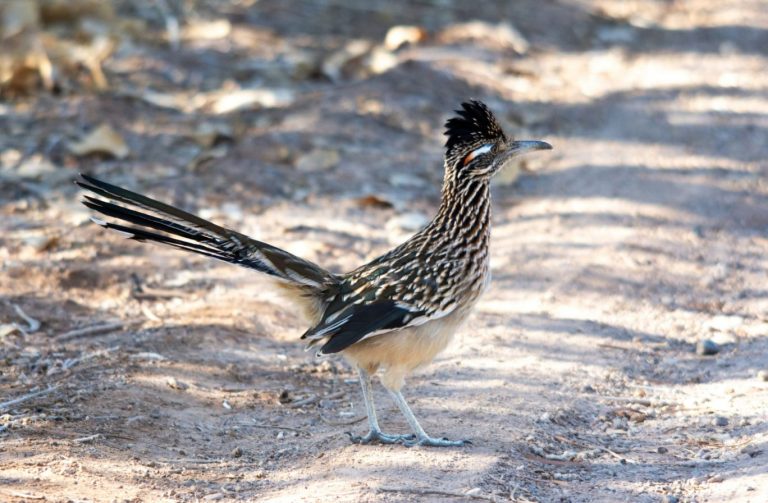What Do Parrots Eat? A Complete Guide to the Ideal Parrot Diet
By Rifat Ahmed – Birdwatcher with 13+ Years of Experience
Parrots are among the most intelligent and vibrant birds in the world, with personalities as colorful as their feathers. But if there’s one thing I’ve learned in my 13+ years of birdwatching, it’s that a parrot’s health and happiness start with what goes into their beak.
So, what do parrots eat?
Whether you’re a bird enthusiast like me or a parrot parent looking to improve your bird’s diet, this comprehensive guide will walk you through everything you need to know about parrot food, from their wild eating habits to crafting the perfect balanced diet in captivity.
What Do Parrots Eat in the Wild?
To understand the ideal parrot diet, it’s important to look at how parrots feed in their natural habitat.
According to the Cornell Lab of Ornithology’s All About Birds, parrots are omnivorous foragers. They adapt their diets based on their environment, but most wild parrots eat a combination of:
- Seeds and nuts
- Fruits and berries
- Leaves and buds
- Flowers and nectar
- Insects and their larvae
Wild parrots spend a good portion of their day foraging. Their diet is incredibly varied and seasonal. For instance, the Eclectus Parrot of New Guinea feasts on tropical fruits and buds, while Australian Cockatoos crack into hard-shelled nuts and seeds.
This diverse, active foraging diet keeps them mentally stimulated and physically healthy.
What Should Pet Parrots Eat?
In captivity, parrots often suffer from a lack of dietary variety, which can lead to malnutrition, obesity, or behavioral issues. Based on my observations and experiences, many owners unknowingly feed their birds poorly balanced meals, thinking seeds alone are enough.
Here’s what a balanced parrot diet should look like:
| Food Type | Percentage of Diet | Notes |
|---|---|---|
| Pellets | 50–70% | Nutritionally balanced, vet-recommended |
| Fresh Vegetables | 20–25% | Crucial for vitamins and fiber |
| Fresh Fruits | 5–10% | Great treat, but high in sugar |
| Nuts & Seeds | 5–10% | Use as training treats or supplements |
| Cooked Grains & Legumes | Occasional | Adds protein and diversity |
| Protein (e.g., boiled egg) | Rare treats | Useful during molting or breeding |
🐦 Note: Parrots of different species (African Greys, Macaws, Budgies, etc.) have slightly different nutritional needs. Always consult with an avian vet for species-specific guidance.
Best Foods to Include in a Parrot Diet
Let’s break down some of the healthiest parrot foods that I recommend from both research and personal observation.
1. Pellets
Pellets are specially formulated to provide essential nutrients. Choose high-quality brands that don’t use artificial colors or preservatives.
📝 Tip: Avoid seed-based pellets which defeat the purpose of balanced nutrition.
2. Fresh Vegetables
Vegetables are the powerhouse of the parrot diet. My parrots love:
- Leafy greens: Kale, collard greens, spinach, swiss chard
- Carrots: Shredded or chopped
- Broccoli: High in calcium
- Sweet potatoes: Rich in beta-carotene
- Bell peppers: Colorful and full of antioxidants
3. Fresh Fruits
Fruits are best served in moderation. Some parrot-safe options include:
- Apples (no seeds)
- Bananas
- Papaya
- Mango
- Blueberries
- Pomegranate
🍉 Always wash fruits thoroughly and remove any pits or seeds.
4. Seeds and Nuts
These are energy-dense and should be given sparingly. My African Grey gets:
- Almonds (unsalted, raw)
- Walnuts
- Pumpkin seeds
- Flaxseeds
🦜 In the wild, cracking nuts also provides important mental stimulation.
5. Cooked Grains and Legumes
Add diversity and protein with:
- Cooked quinoa
- Brown rice
- Lentils
- Chickpeas
- Oats
Never serve these with salt or spices. Keep it plain!
Foods You Should Never Feed a Parrot
Some human foods can be toxic or fatal to parrots. Here’s a no-go list:
| Dangerous Food | Reason |
|---|---|
| Avocado | Contains persin, toxic to birds |
| Chocolate | Theobromine poisoning risk |
| Caffeine | Causes rapid heartbeat and seizures |
| Alcohol | Extremely toxic to all birds |
| Salt | Disrupts fluid balance, can cause kidney failure |
| Onions & Garlic | Cause digestive and blood-related issues |
| Fruit pits/seeds | Apple seeds, cherry pits contain cyanide |
| Junk food | Chips, fries, cookies—empty calories and harmful additives |
⚠️ According to All About Birds, improper diets are a leading cause of early death in captive parrots.
Sample Daily Meal Plan for a Healthy Parrot
Here’s a simple meal plan based on what I feed my parrots:
🌞 Morning (7–8 AM)
- Pellets (50% of daily portion)
- Fresh greens (chopped spinach, kale)
- One slice of apple or banana
🌤️ Midday Snack (12 PM)
- A few almonds or pumpkin seeds
- Small piece of sweet potato (steamed)
🌙 Evening (6 PM)
- Pellets (remaining portion)
- Cooked lentils or quinoa
- Broccoli florets and bell pepper strips
💧 Fresh water should always be available and changed daily.
Parrot Feeding Tips from My 13 Years of Experience
After more than a decade of observing parrots both in the wild and in home environments, I’ve found that feeding is about more than just nutrition—it’s also about enrichment, bonding, and understanding your bird’s personality. Here are some tried-and-true tips that can make feeding time both healthier and more enjoyable for your parrot:
1. Use Foraging Toys
In the wild, parrots spend hours searching for food. To mimic this natural behavior and keep them mentally stimulated, try offering their food in foraging toys. These can be store-bought puzzles or simple DIY solutions like:
- Wrapping nuts or dried fruit in paper and tucking it into a cardboard tube
- Hiding small pieces of food inside shredded paper or wooden blocks
- Using a treat ball where they have to roll it to get food out
This not only helps combat boredom and destructive behaviors but also gives your parrot a sense of purpose during the day.
2. Rotate Fruits and Veggies Regularly
Parrots thrive on variety. If you offer the same food every day, they can get bored and even start refusing it. I recommend rotating your bird’s fresh produce every week. For example:
- Week 1: bell peppers, broccoli, apples
- Week 2: carrots, kale, blueberries
- Week 3: zucchini, chard, mango
Not only does this keep meals exciting, but it also exposes them to a broader spectrum of nutrients.
🛠 Pro Tip: Introduce new items slowly—parrots can be suspicious of unfamiliar foods. Mix the new with the familiar to ease transitions.
3. Avoid Feeding from the Table
While it’s tempting to share your snack with your parrot when they look at you with those curious eyes, it’s best to avoid giving them human table food. Many common ingredients—like salt, sugar, butter, and spices—can be harmful or even toxic to birds.
Feeding from the table can also encourage begging behavior, picky eating, and aggression during mealtimes. Instead, offer healthy, bird-safe treats at a designated feeding time or area.
4. Chop Mixes Work Wonders
One of the easiest ways to ensure your parrot gets a balanced, colorful meal is by preparing a “chop mix”—a combination of finely chopped vegetables, grains, legumes, and greens. I usually prepare a batch once every 3–4 days and store it in an airtight container in the fridge.
Here’s a simple example of my go-to mix:
- Chopped kale and spinach
- Shredded carrots and beets
- Cooked quinoa and lentils
- A sprinkle of ground flaxseed
You can serve it as-is or use it as a base, adding a few fresh fruits or nuts for variety. Chop mixes also reduce food waste and make daily feeding quick and easy.
5. Observe and Adapt
No two parrots are the same. Over time, I’ve learned to read my birds’ preferences and health signs through their eating habits. Some parrots love berries, while others turn their beaks up at anything red. Some enjoy warm, soft foods while others prefer crunchy textures.
Watch for signs like:
- Food being tossed or ignored (they may dislike the taste or texture)
- Preference for certain food colors or shapes
- Changes in appetite that could signal health issues
Adapt their meals to what they enjoy while still meeting nutritional needs. Feeding should be a flexible, interactive process—not a rigid routine.
FAQs About Parrot Food
Q1: Can parrots survive on seeds alone?
No. A seed-only diet leads to malnutrition and liver disease. Seeds should only be a small part of the parrot’s food.
Q2: Is bread okay for parrots?
It’s not recommended. Bread lacks nutrients and can expand in the gut, leading to discomfort or digestive issues.
Q3: How often should I feed my parrot?
Twice a day, with healthy snacks or foraging opportunities in between.
Q4: Can I feed my parrot meat?
Occasionally, small amounts of lean cooked meat or boiled eggs can be offered, especially during molting.
Q5: Do baby parrots eat the same food?
No. Baby parrots are typically hand-fed formula until they’re weaned. Consult a vet for safe weaning transitions.
Final Thoughts
Understanding what parrots eat is one of the most important responsibilities of a bird owner or enthusiast. A well-fed parrot is not just physically healthy—it’s also more playful, vocal, and emotionally balanced.
With a diet rooted in pellets, fresh veggies, controlled fruits, grains, and the occasional seed, you’re giving your parrot the gift of a longer, happier life.
As someone who’s spent over a decade observing parrots in the wild and in aviaries, I can tell you firsthand: nothing beats the joy of seeing a parrot thrive—starting with the right food.

